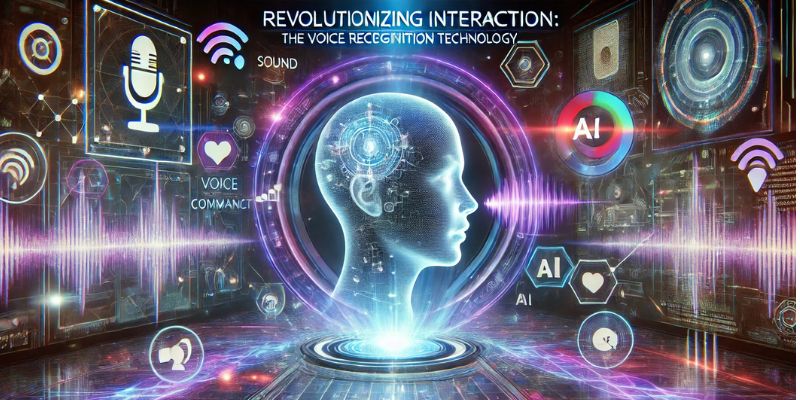Voice Recognition, furthermore known as speech reputation, is a technology that converts spoken language into text or commands that machines can understand. It entails the usage of algorithms and computational fashions to investigate audio input, discover styles, and translate them into actionable data. Unlike voice synthesis, which generates human-like speech from text, voice recognition focuses on facts and processing human speech.
Historical Evolution of Voice Recognition Systems
The journey of voice popularity technology dates back to the mid-twentieth century. Early structures, which consist of IBM’s Shoebox in the Nineteen Sixties, must recognize a constrained set of digits and phrases. Over the long term, improvements in computing electricity, tool analyzing, and herbal language processing (NLP) have notably superior the accuracy and capabilities of voice recognition systems. The creation of neural networks and deep learning in the 2010s marked a turning factor, permitting structures like Siri, Alexa, and Google Assistant to recognize herbal language with brilliant precision.
How Voice Recognition Works
Voice Recognition Technology is based on an aggregate of present-day algorithms, computational linguistics, and device mastering to method and interpret human speech.
The Science Behind Speech-to-Text
The machine starts with the capture of audio entered through a microphone. The tool then converts the analog audio signal proper right into a digital format, it is analyzed to pick out phonetic styles. Advanced algorithms break down the speech into smaller components, which include phonemes, and have a look at them within the direction of a database of diagnosed phrases and phrases. This way, referred to as acoustic modeling, is determined with the resource of language modeling, which predicts the maximum likely collection of terms primarily based completely on context.
Key Components: Natural Language Processing (NLP) and Machine Learning
Natural Language Processing (NLP) performs an important position in permitting machines to understand the nuances of human language, together with grammar, syntax, and semantics. Machine-gaining knowledge of algorithms, in particular deep studying models, is used to teach voice recognition structures on massive datasets of spoken language. These fashions decorate through the years, gaining knowledge of recognizing accents, dialects, or maybe contextual cues.
Applications of Voice Recognition in Everyday Life
Voice Recognition has decided large applications in numerous elements of everyday life, making interactions with the generation extra intuitive and inexperienced.
Virtual Assistants: Siri, Alexa, and Google Assistant
Virtual assistants like Siri, Alexa, and Google Assistant have become family names, imparting clients the capacity to perform obligations through voice commands. From placing reminders and playing music to answering questions and controlling smart domestic devices, the one’s assistants have redefined consolation.
Voice-Activated Smart Home Devices
Smart domestic devices, collectively with thermostats, lighting, and safety structures, now come organized with voice recognition capabilities. Users can control their domestic surroundings with simple voice instructions, improving consolation and power performance.
Voice Search and Navigation
Voice searching has come to be a well-known function on smartphones and awesome devices, permitting clients to find out facts fast without typing. Similarly, voice-activated navigation systems in automobiles offer hands-loose instructions, improving protection and comfort.
Challenges and Limitations of Voice Recognition
Despite its upgrades, the Voice Recognition generation faces severe traumatic situations that want to be addressed.
Accents, Dialects, and Language Barriers
Accents and dialects can pose traumatic conditions for voice popularity structures, crucial to errors in interpretation. While improvement has been made, reaching common accuracy stays a chunk in improvement.
Privacy and Data Security Concerns
The use of voice popularity will boost troubles about privacy and information safety. Storing and processing voice statistics can screen clients for dangers together with unauthorized admission and statistics breaches.
Background Noise and Technical Limitations
Background noise and horrible audio can have an impact on the general well known overall performance of voice recognition systems. Additionally, technical barriers, alongside aspect latency and processing power, can affect actual-time programs.
The Future of Voice Recognition Technology
The future of voice recognition technology is packed with thrilling opportunities, driven via way of growing tendencies and improvements.
Emerging Trends: Emotion Detection and Contextual Understanding
Future voice recognition systems can be capable of locating feelings and responding for this reason, developing greater custom-designed interactions. Contextual statistics will allow structures to interpret ambiguous commands primarily based on purchaser conduct and opportunities.
The Role of 5G and Edge Computing
The rollout of 5G networks and the adoption of difficulty computing will decorate the fee and overall performance of voice recognition systems. Real-time processing and reduced latency will permit extra responsive and reliable packages.
Ethical Considerations in Voice Recognition
As Voice Recognition generation turns into greater pervasiveness, it is essential to address ethical problems to ensure its accountable use.
Bias in AI and Voice Recognition Systems
Bias in AI algorithms can result in the unequal remedy of customers based totally on factors together with accessory, gender, or ethnicity. Efforts need to be made to enlarge honest and inclusive structures.
Ensuring User Privacy and Data Protection
Protecting customer privacy and data is paramount. Transparent information series practices and sturdy safety capabilities are had to bear in mind and save you from misuse.
The Impact on Human Interaction and Employment
The great adoption of voice recognition generation can also moreover effect human interplay and employment. While it may beautify normal overall performance, it is able to additionally reduce the need for sure jobs, necessitating the frame of humans version.
Conclusion: The Transformative Power of Voice Recognition
Voice Recognition generation has come in a protracted manner considering its inception, revolutionizing how we interact with machines and each one-of-a-kind. Its applications span in the course of industries, improving consolation, overall performance, and accessibility. As improvements hold, the capability for Voice Recognition to form the future of human-computer interaction is huge.
Read more : xnxubd dkexh s4 mini: Ultimate Guide to Features & Updates


